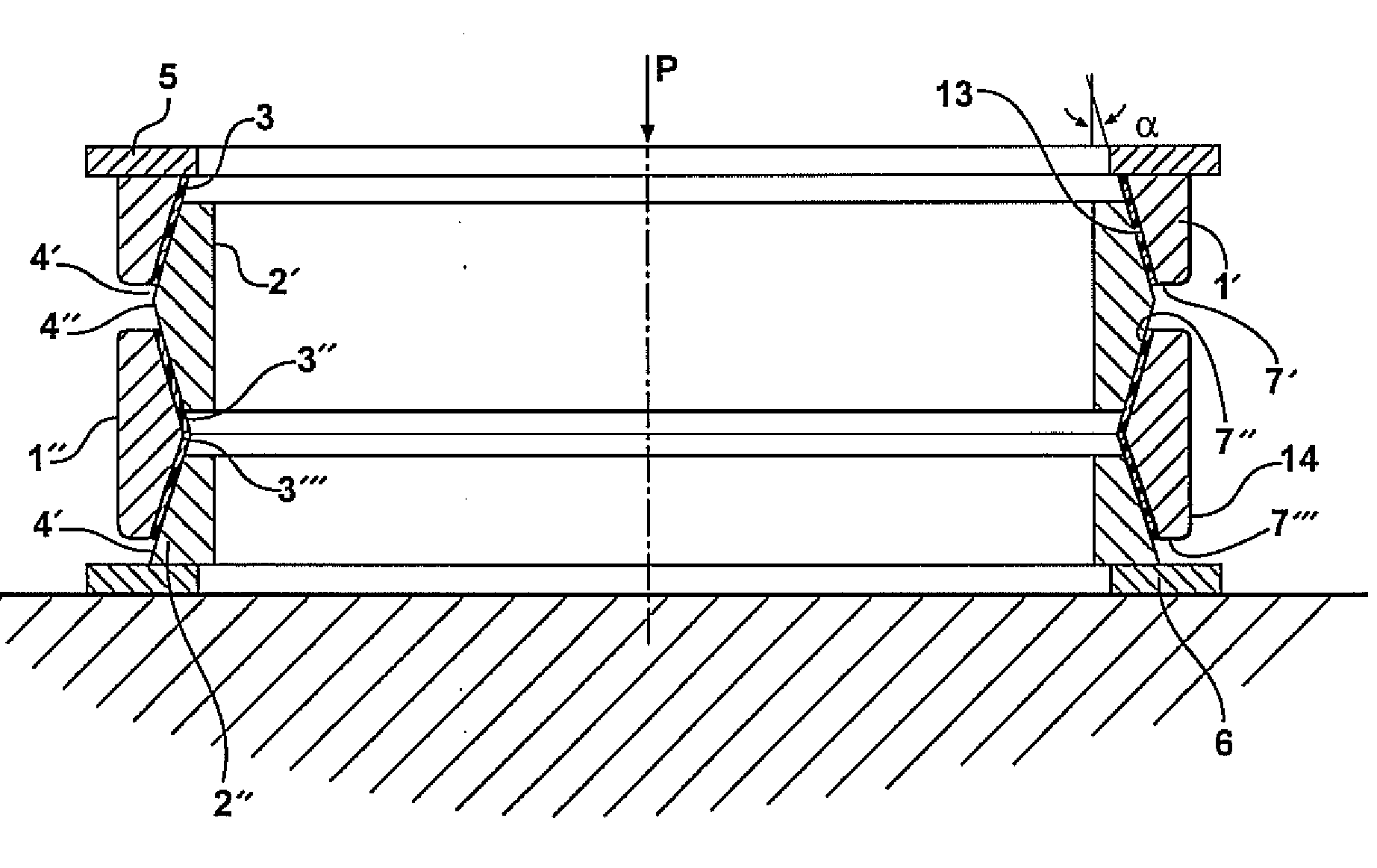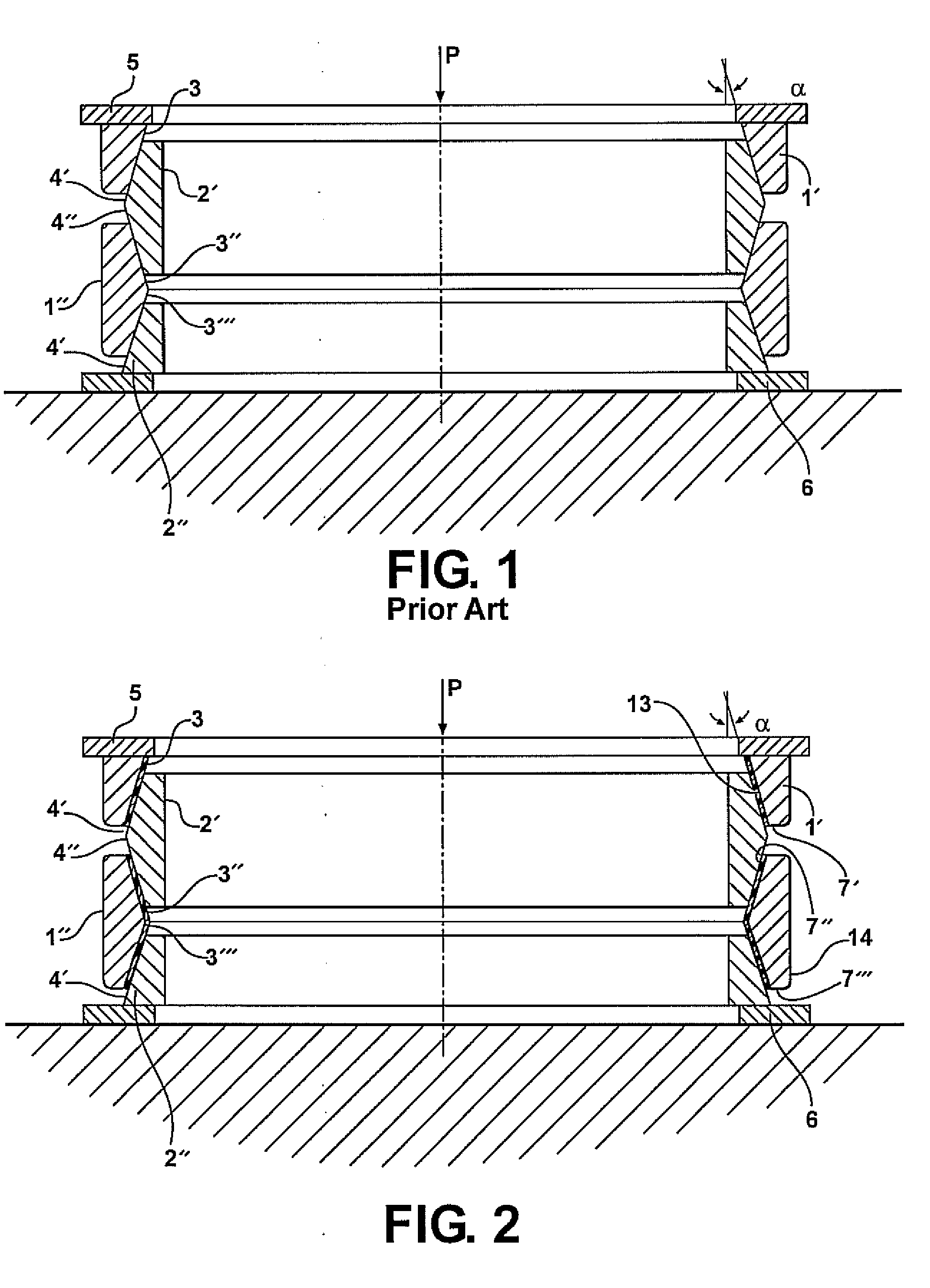Tension-compression spring
- Summary
- Abstract
- Description
- Claims
- Application Information
AI Technical Summary
Benefits of technology
Problems solved by technology
Method used
Image
Examples
Embodiment Construction
[0022]The following specification describes a tension-compression spring shown in FIG. 2 which is free from the shortcomings of the Prior Art tension-compression spring shown in FIG. 1. In FIG. 2, external (outer) rings 1 and internal (inner) rings 2 having conforming and interacting beveled surfaces 3 and 4, respectively, do not contact directly, but interact via layers of elastomeric (rubber or rubber-like) material or via multi-layered elastomer-rigid material (e.g., but not only, metal) laminates 7. In FIG. 2, single elastomeric layers 7 are shown. A cross section of a laminate 7′ comprising two elastomeric layers 10 and 11 bonded to intermediate rigid (e.g., but not necessarily, metal) layer 12 through a plane containing the axis of the spring is shown in FIG. 3. Layers of elastomeric layers or laminates 7 are attached (by bonding, by friction, or by other known techniques) to the beveled surfaces of internal rings 2′ and 2″ and / or of external rings 1′ and 1″.
[0023]When the axi...
PUM
 Login to View More
Login to View More Abstract
Description
Claims
Application Information
 Login to View More
Login to View More - R&D
- Intellectual Property
- Life Sciences
- Materials
- Tech Scout
- Unparalleled Data Quality
- Higher Quality Content
- 60% Fewer Hallucinations
Browse by: Latest US Patents, China's latest patents, Technical Efficacy Thesaurus, Application Domain, Technology Topic, Popular Technical Reports.
© 2025 PatSnap. All rights reserved.Legal|Privacy policy|Modern Slavery Act Transparency Statement|Sitemap|About US| Contact US: help@patsnap.com



